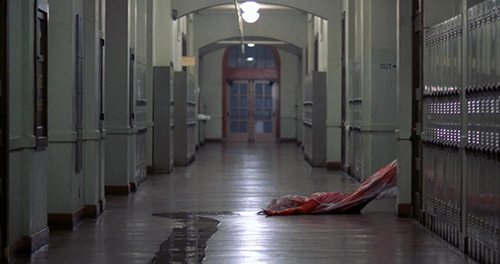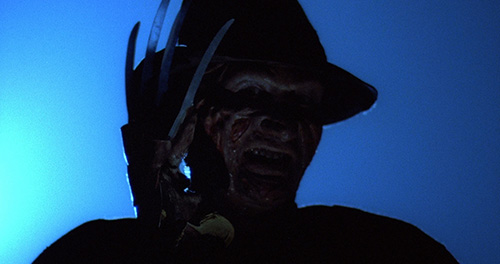[8]
Teenagers are hunted in their dreams by a murderous burn victim. But unlike normal nightmares, if the kids die in their dreams, they also die in real life. Writer/director Wes Craven (Scream, The Hills Have Eyes) works from a marvelous concept and introduces the world to one of the horror genre’s most indelible villains — Freddy Krueger, played with monstrous glee by Robert Englund, who would go on to further embellish the iconic character over the course of many sequels.
A Nightmare on Elm Street is terrific in its broad strokes. I love the atmosphere of Craven’s many boiler-room based scenes, and the deaths of two characters in particular are staged pretty magnificently — both involving gallons of blood and the defiance of gravity. I also love the back story of Freddy Krueger, which our lead heroine (Heather Langenkamp) learns about from her mother (Ronee Blakley). Turns out Krueger was a child molester let loose by the courts on a technicality, leaving it up to a group of parents to gather up some gasoline and partake in a little vigilante justice.
The acting is uneven from some of the performers, but Johnny Depp (in his first feature film) and Amanda Wyss are solid as two of Langenkamp’s best friends. While there are a few great special effects, there are a lot of unconvincing ones that underscore the film’s low-budget parameters. Charles Bernstein’s score is hit and miss for me, as well. I love the melodies, but it lapses into repetitive, cheesy synth zones at times.
But don’t get me wrong. Even though I don’t love some of the details, I have mad respect for Craven, the story, and its villain. And the film launched a franchise of films that are better, over all and on average, than either the Friday the 13th or Halloween franchises.
With John Saxon and Charles Fleischer.


